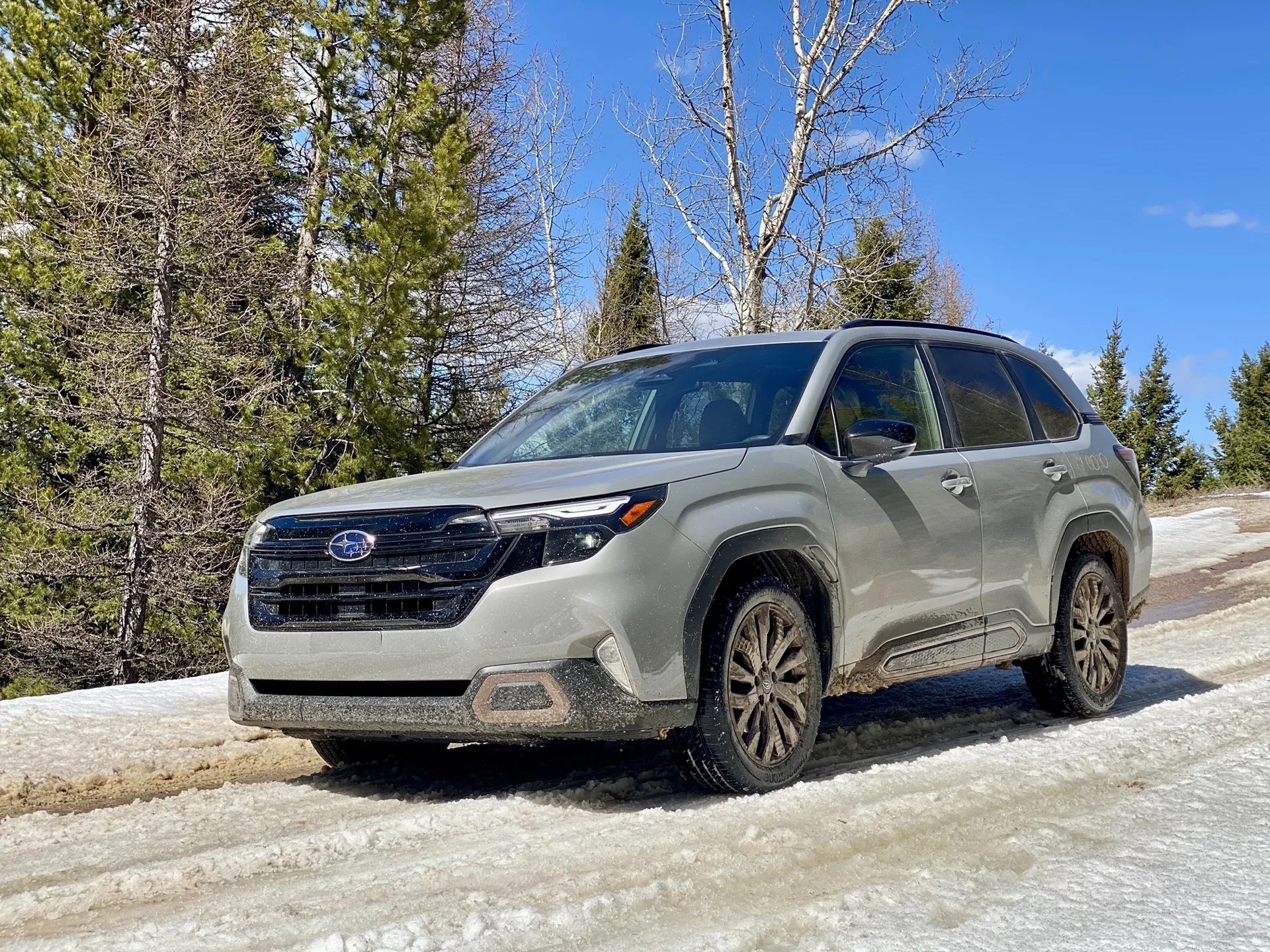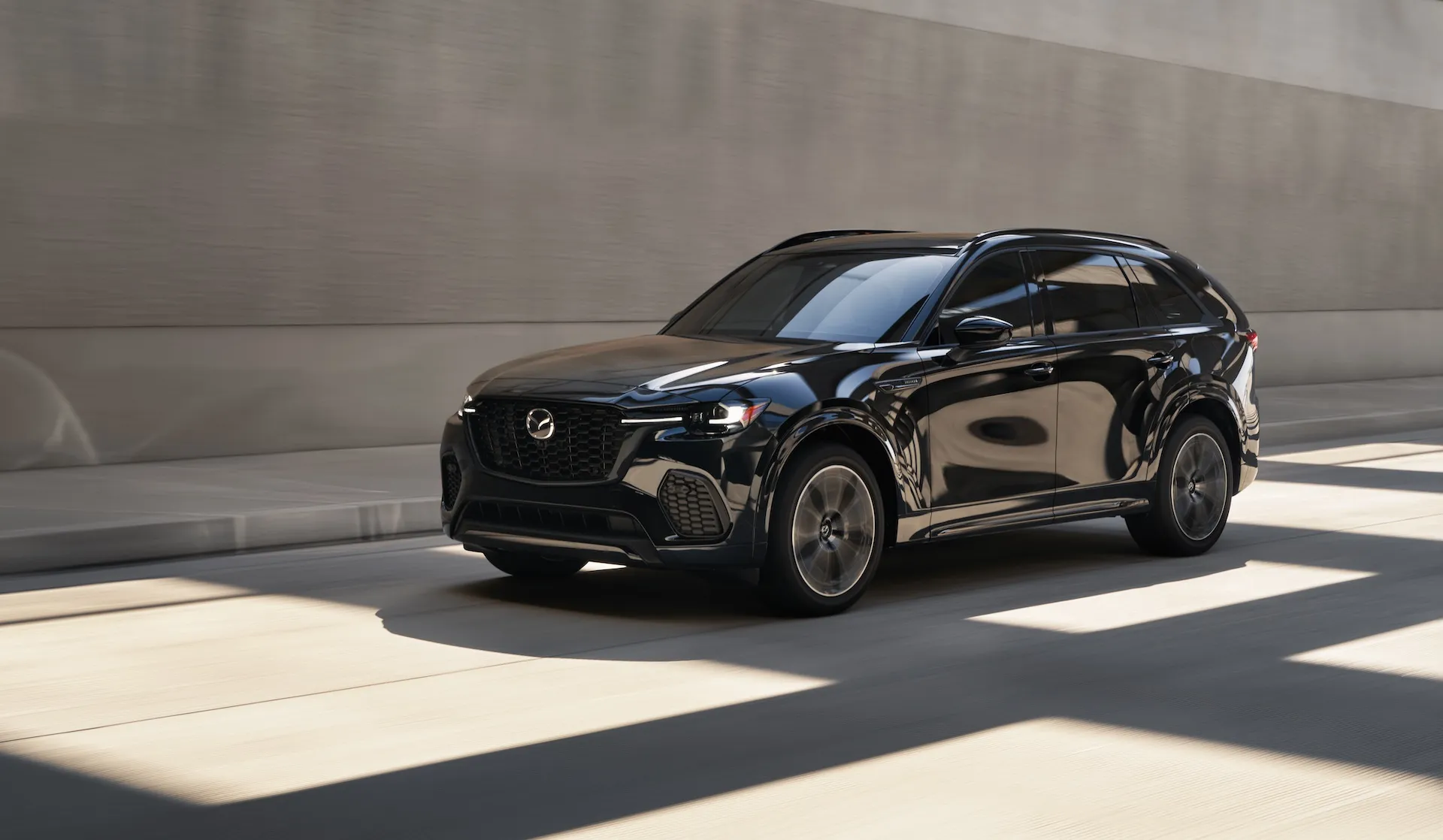The Subaru Forester fits in as the middle child in the brand’s crossover SUV lineup, often blending in, easy to overlook among the firstborn Outback and the spunky, smaller Crosstrek. It’s the Jan Brady in this bunch, with the Ascent as Alice called in to help out for heavier family duty.
Fret not, middle child. Car shoppers appreciate the middle-child traits of the hard-working, reliable, steadfast Forester: it’s been the bestselling Subaru every month this year, and those traits only get better with the redesigned 2025 Subaru Forester that goes on sale this May.
It’s a good car, to be simple, and the updates are understated in classic Forester fashion. It’s a tad longer, but still taller, boxier, and more utilitarian than the Outback, which makes up the sportier side of Subaru’s SUV equation.
From the outside, the changes to the sixth-generation Forester are modest at best. A commanding greenhouse with outstanding views sits on top of a rectangular bod with a low beltline. It rides on 17- to 19-inch wheels, with muted cladding spritzed with air vents behind the front wheels. A wider, taller grille stretches into standard LED headlights tipped with slim DRLs that wrap around to the bulging fenders.
It’s square, but it’s not a square; the modesty in its design offers some relief to all the zigs and zags, the clads and doodads of other compact crossovers—and other Subarus—pretending to off-road fame. This familiar Forester, however, belies all new sheet metal and new glass, according to Subaru. It also conceals the most impressive changes to the Forester: the interior looks…nice, not just utilitarian. Most impressively, it’s the quietest riding Forester I’ve ever tested, and I owned a second-gen Bubu.

How does the new Subaru Forester drive?
The Forester never feigns to put fun over function. Subaru tweaked the 2.5-liter flat-4 so it makes a little less horsepower but a little more torque, from 182 hp and 176 lb-ft on the 2024 to 180 hp and 178 lb-ft on the 2025. The small changes don’t make it much peppier off the line, but they add up to more accessible power for passing moves or highway merges when you’re up and running, with peak torque coming on at 3,700 rpm instead of 4,400 rpm in the 2024. It still gets 29 mpg combined, while Sport and Touring models rate at 28 mpg.
A Forester hybrid model arrives next year as a 2026 to better compete with the Toyota RAV4, Honda CR-V, and Hyundai Tucson hybrids.
Sport models, such as the one I tested in western Montana, have paddle shifters that give the driver some control over the ever-changing gearing of the continuously variable automatic transmission. CVTs have gotten much better over the years in behaving as predictably as an automatic, and Subaru’s is one of the best.
This year, it mimics eight gears instead of seven, so when I approached a slow rolling trailer with a couple of horses, I flicked down a couple gears to goose the engine into passing. That extra step, or “gear,” also gives Forester drivers a broader range for engine braking on steep descents down the Rockies, for instance, instead of riding the brakes.
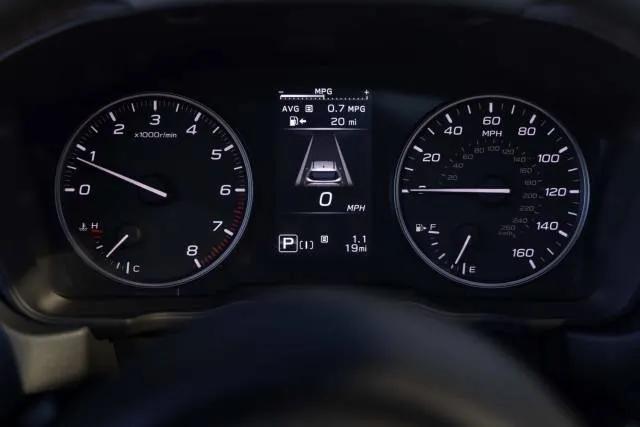
The tester also had Sport and Intelligent modes on the steering wheel controls, with the default Intelligent meant for efficient cruising and Sport riding the revs a bit longer for more accessible power. It’s fine on a straight line, and even though Subaru lifted its dual-pinion power steering system from the sportier WRX, the steering remains light though it’s less jittery over bumps. MacPherson front struts and a double-wishbone rear hold down the fort, but pushing it in corners results in some expectedly topsy handling for the tall-riding Forester. Such is the tradeoff for that tall turret of a greenhouse.
Thin pillars and great views out of the front, sides, and blind spots set the benchmark for outward vision in the class. That’s great for safety, and for gazing at fields clumped with bison or lowing with cattle, under big skies dotted by eagles.
The most noticeable improvement to the Forester comes from the absence of noise from the engine bay. Greater structural rigidity, more adhesives, and more sound deadening really allow only tire and wind noise into the cabin. It made the wide open fields and endless hills near the Blackfoot River even more serene, and I imagine it can help calm even the gnarliest commutes. It’s a stark and welcome contrast from past Foresters.
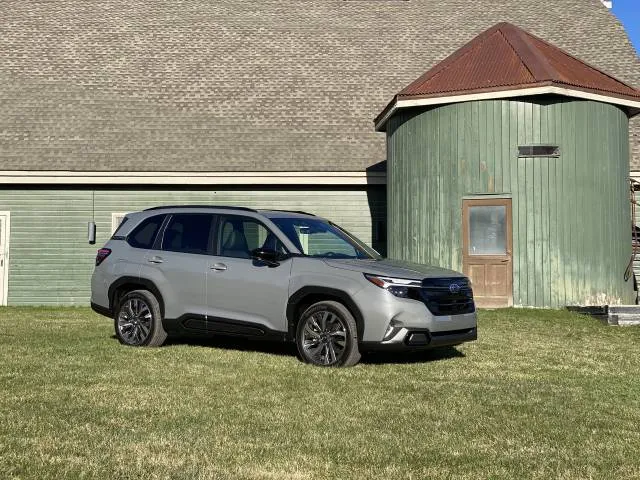
Does the 2025 Subaru Forester have standard all-wheel drive?
Of course, and Subaru updated its full-time all-wheel-drive system in the new Forester to better factor in the steering angle and distribute torque quicker to the axles and wheels in need. Sport, Limited, and Touring models get dual-function X-Mode that adds a Deep Snow/Mud mode to the single-function Snow/Dirt mode. It makes a difference.
At about 6,000 feet on a sun-baked spring day, the rutted access road descending the mountaintop ghost town still held a recent snowfall. It was nearly 60 degrees, and on the northern side of the road, hidden from the sun, the wet mass sucked like poured cement. We came upon a rescue operation, with an Outback Wilderness strapped onto the recovery hook of a Forester Premium that lacked dual-function.
The driver had nosed into the deepest, wettest part of a long, melting snow bank. It swallowed more than the 8.7 inches of ground clearance on every Subaru crossover.
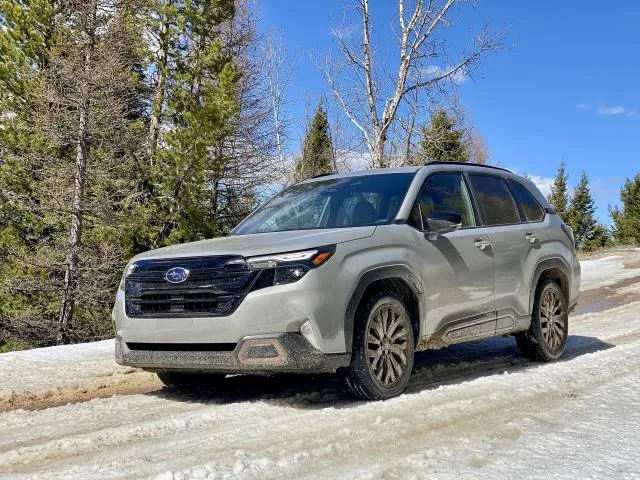
That single mode is essentially a hill descent system with automatic braking that can’t really be controlled by the driver. Activating the modes requires a press or two and swipe of the touchscreen’s narrow top menu bar. I would prefer an actual button on the console or either side of the touchscreen for quicker, cleaner access. Once in Snow/Dirt mode, when you let off throttle under 20 mph, it’ll automatically stay at that speed unless you throttle up or brake to override it. Otherwise, you can’t set the descent speed. I wish it had a steering wheel control so the driver could control some of the, uhh, controls.
Whatever the case, I doubt the driver had it set because it would have stayed at a constant speed to get through the 40-foot long bank instead of what must have been a hard braking event from the driver that made it get buried sideways, nose up slope, tail inching near a steep drop off.

2025 Subaru Forester
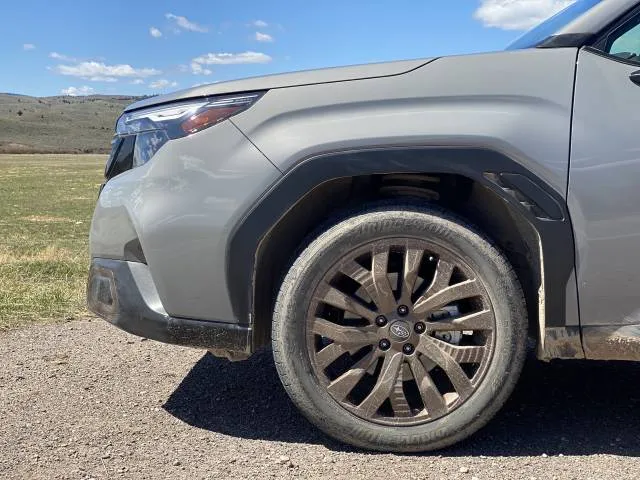
2025 Subaru Forester
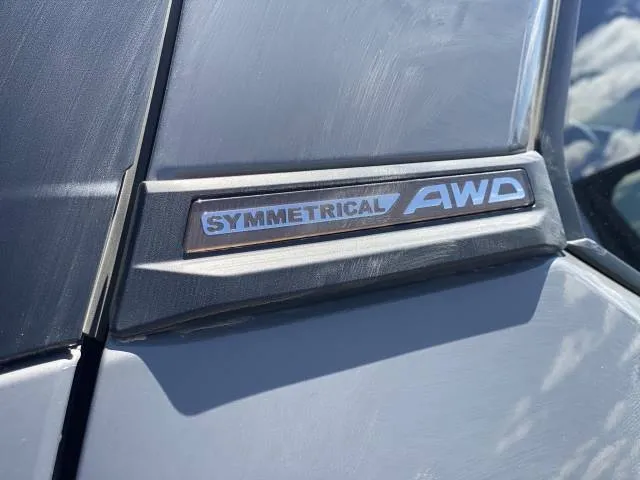
2025 Subaru Forester
It’s doubtful that Forester Premium would have gotten stuck with dual-function X-Mode. The extra Deep Snow/Mud limits the traction control system to allow for more wheel spin and ultimately better grip.
In about five minutes, and with a physical nudge to the hood, the Forester Premium was dislodged, and all other Foresters continued on the route without incident.
For drivers thinking they’ll do more intense off-roading, the Subaru Forester Wilderness carries over unchanged from the 2024 model year. It would not have been necessary up at ghost town road.
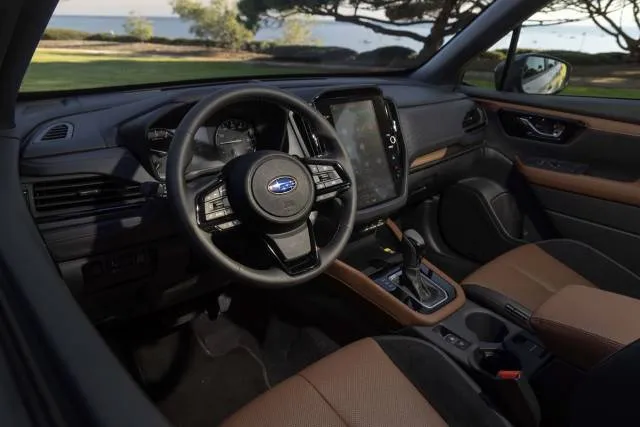
Yeah, but how is the Subaru Forester for everyday driving?
The powertrain enhancements and quietude make it more enjoyable, and the new 11.6-inch vertical touchscreen on all but the base model modernize it. There’s no more CD player, but traditionalists could revel in amplitude modulation, or AM radio.
New front seat designs better bolster the hips, and all but the base model has a power driver seat that’s heated. Subaru didn’t skimp on the rear seats, either, with nearly 40 inches of legroom and plenty of headroom afforded by its tall design. Softer materials, as well as contrasts of metallic trim and textured interior parts on the dash and doors, such as a diamond-like dash panel over the glovebox, elevate this Forester over its predecessors.
Subaru charges more for it, of course, but you get much more for it to soften the $2,900 increase over last year. Starting at $31,090, including a $1,395 destination fee, the base Forester still costs less than a base Toyota RAV4 LE with AWD.
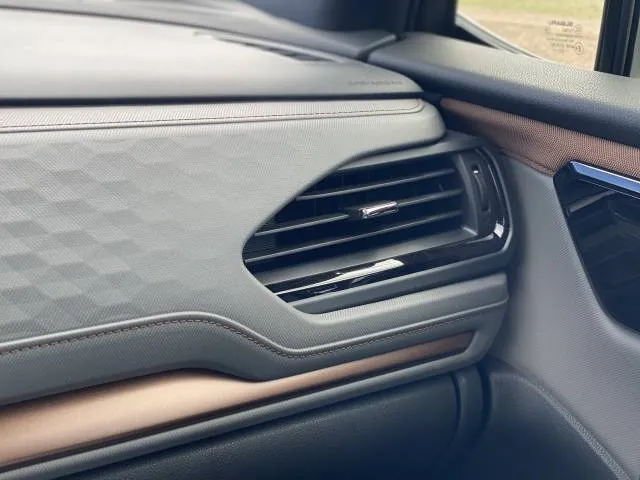
Most of the enhancements might not even be noticeable and may never be used. Subaru added a third camera to its standard EyeSight safety system for a wider field of view and updated software that operates more smoothly and responsively. The alerts for emergency braking and lane control might come on louder and earlier than friskier drivers will prefer, but that’s in keeping in line with the Forester’s top safety ratings. Last week, the outgoing model was the only one of 10 popular compact crossover models tested by the IIHS to avert a higher-speed collision with a car, motorcycle, or semi.
The Sport model I spent most of my time in cost $35,890 and flashed 19-inch wheels trimmed in bronze, some chrome and bronze badging inside and out, black exterior trim bits, an interior with more soft-touch padding, and waterproof synthetic leather, among other upgrades. It’s priced about $1,000 less than last year’s Wilderness.
The Forester doesn’t just fit into the Subaru family, it epitomizes it. That’s a good pedigree from a small family with enviable sales.

Subaru paid for airfare and lodging to get us firsthand access of the 2025 Subaru Forester.

